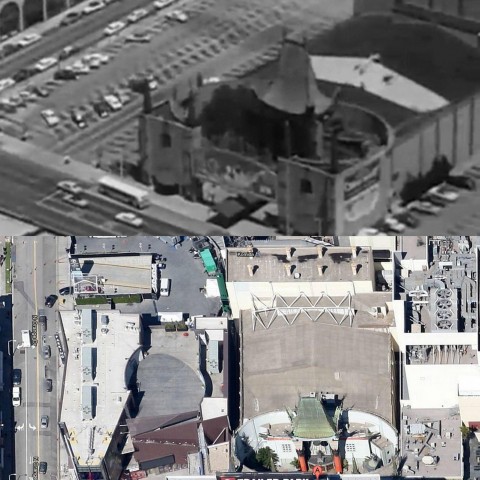“This movie is going to be pretty obvious.” That’s not the best way to get the viewer’s attention. And the rest of the script, read by Bob Crane, is not much better: “Hey Kitty, look … Kitty, you didn’t look hard enough … See the thing that looks like a building? That’s a building!” Nor is the premise of the film very good: Kitty is a novice actress, and, before appearing in her first movie, she gets an aerial tour of Hollywood and its landmarks.
But from a historical perspective, this 1950s footage of the Los Angeles movie industry has its intriguing moments. It’s particularly interesting to see how much space there still was around some of the studios and movie theaters. Just compare the image of Grauman’s Chinese Theater on Hollywood Boulevard taken from the film with a Google Earth shot from today:
By profession, Matthias Rascher teaches English and History at a High School in northern Bavaria, Germany. In his free time he scours the web for good links and posts the best finds on Twitter.


